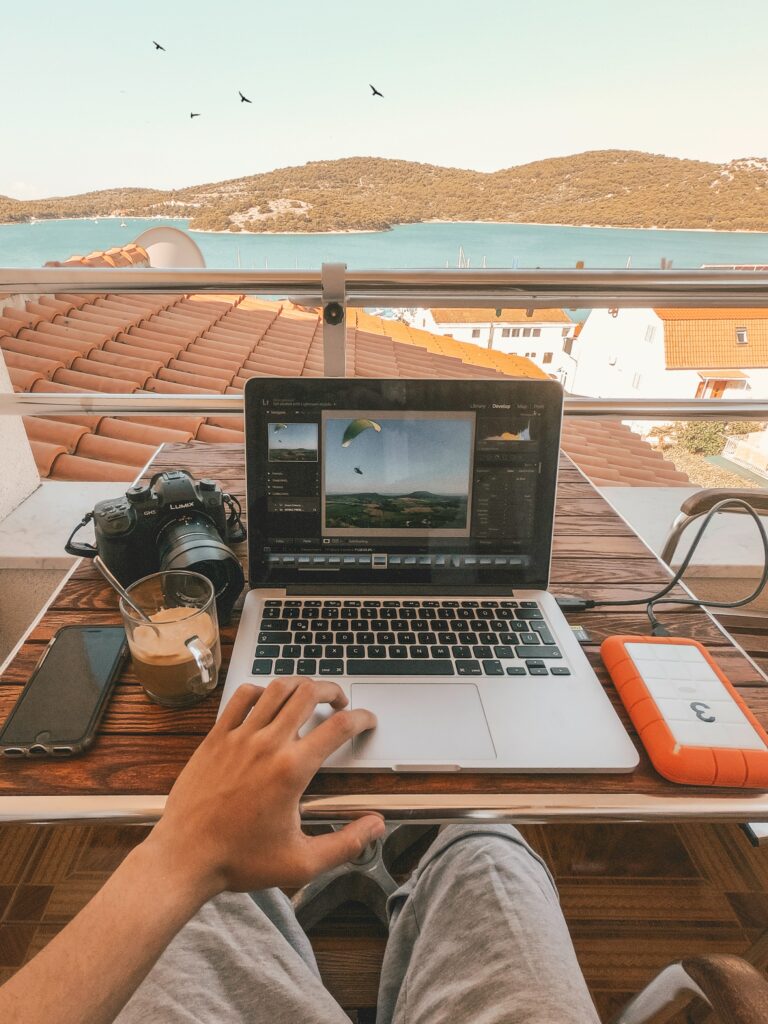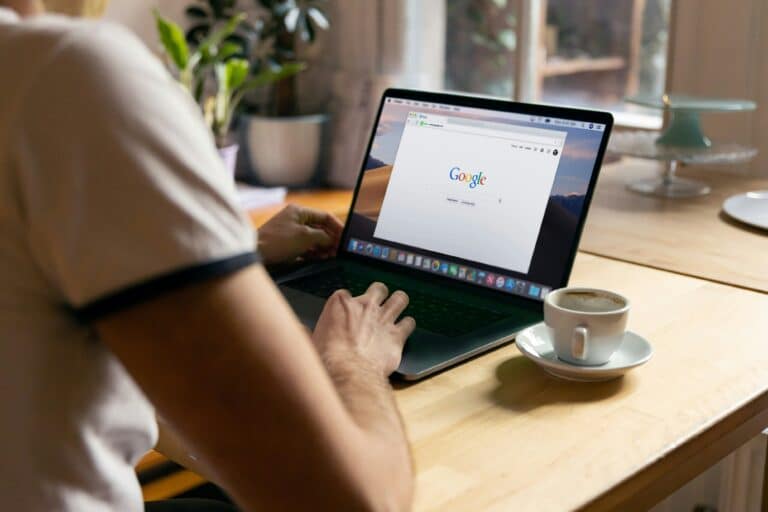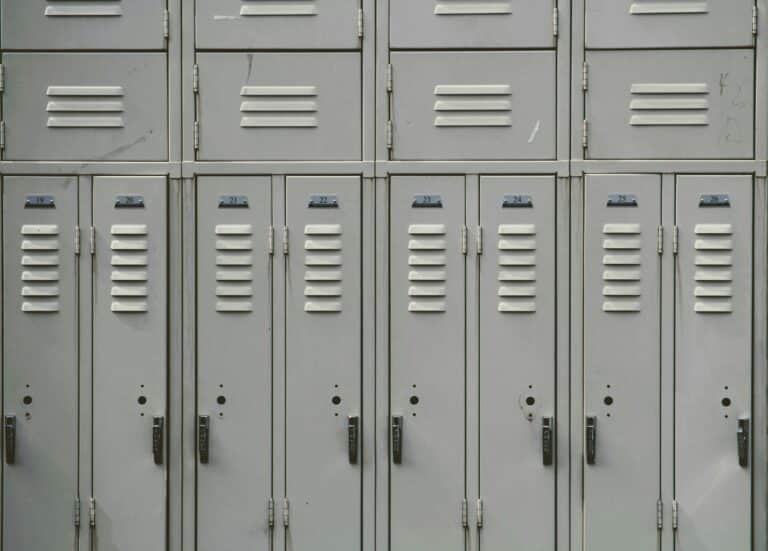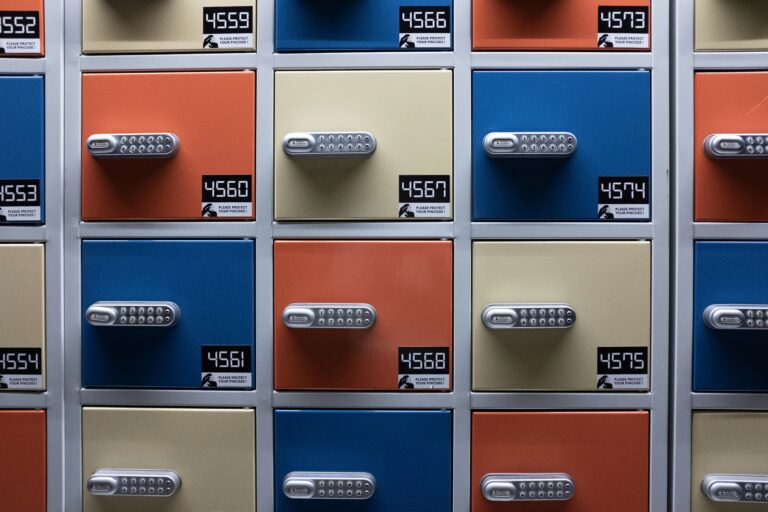It’s a movement. For the creatively inclined working remotely, it’s a lifestyle choice that promotes productivity, inspires creativity, and reduces stress. But, how do you balance minimalism and functionality? Can a workspace be both clutter-free and yet, house everything you need within arm’s reach? The answer is a resounding yes! 😎

Maximizing your minimalist workspace is all about creating a space that is both aesthetically pleasing and highly efficient. It’s about creating a space that allows your ideas to flow freely, your productivity to skyrocket, and your creativity to flourish. But, achieving that balance can be challenging. It requires not just decluttering but also smart storage solutions and a bit of creativity. This is where storage hacks come in.
Why are Creative Storage Hacks Essential for a Minimalist Workspace?
At first glance, minimalism and storage seem at odds with each other. After all, isn’t minimalism all about having less? While that’s true, minimalism is not about deprivation. It’s about intentionality. It’s about keeping what’s necessary and valuable, and finding smart ways to store them without creating clutter or disturbing the aesthetics. It’s about maximizing the functionality of the space without compromising on its minimal appeal. This is the essence of creative storage hacks. They help you maintain a clean, clear workspace, while still ensuring that everything you need is easily accessible. 📚🖊️
What to Expect in this Article?
In this article, we will delve into various creative storage hacks that can help you optimize your minimalist workspace for maximum productivity. We will explore innovative solutions that use vertical space, hidden storage, and multipurpose furniture to maximize functionality without adding clutter. Whether you’re a designer, writer, coder, or artist, these storage hacks can be customized to suit your unique needs, making your workspace a haven of creativity and productivity. 🎨👩💻
We will also discuss the role of digital tools in creating a minimalist workspace, and how they can be leveraged to reduce physical clutter. From cloud storage to digital note-taking apps, these tools can radically transform your workspace, making it more streamlined and efficient. 💻☁️
Moreover, we will take a deep dive into the psychological impact of a minimalist workspace, and how it can boost your creativity and productivity. We will look at how color schemes, natural light, and plants can enhance the aesthetics of your workspace, and create a calming, inspiring environment. 🌱💡
Finally, we will provide practical tips and guidelines on how to maintain a minimalist workspace over time. Because, let’s face it, decluttering is just the beginning. The real challenge is keeping it clutter-free and organized. But don’t worry, we’ve got you covered! 😉
So, whether you’re a seasoned minimalist looking for new storage hacks, or a remote creative embarking on a minimalist journey, this article is for you. Get ready to transform your workspace and unleash your creative potential!
Unveiling the Art of Minimalism in Your Workspace
Remote working has become a common practice, and having an optimal workspace is crucial for productivity. The concept of minimalism has swept across multiple facets of life, with the workspace being no exception. In this context, minimalism refers to having only the essential items on your desk to promote focus and efficiency. This article will delve into creative storage hacks that can help you maximize your minimalist workspace. If you want to explore the visual aspect of a minimalist workspace, check out the YouTube video “Desk Setup: Minimalistic & Productive Workspace” by Matt D’Avella.
However, creating a minimalist workspace goes beyond just decluttering your desk. It involves creating an environment that supports your productivity, reduces stress, and facilitates creativity. It’s about creating a space where your mind can breathe.
So, how do you strike the balance between having a clean, distraction-free workspace, and ensuring you have all the resources you need at your fingertips? This balance can be achieved through innovative storage solutions. Let’s explore some creative storage hacks for remote creatives.
The Art of Decluttering
Before we dive into storage solutions, it’s important to mention the crucial first step – decluttering. This process involves getting rid of unnecessary items in your workspace. Not only does decluttering provide a clean slate to work with, but it also has psychological benefits. According to a study by the Princeton University Neuroscience Institute, clutter competes for your attention and results in decreased performance and increased stress. So, the first step to maximizing your minimalist workspace is to get rid of the clutter.
Now that we’ve established the importance of decluttering, the question is, how do you decide what to keep and what to toss? A good rule of thumb is to keep only those items that you use on a daily basis. Everything else can be stored away. However, you’ll need clever storage solutions to ensure that these items are still easily accessible when needed. And that’s where our creative storage hacks come into play.
Watch this YouTube video “Declutter Your Desk in 6 Steps” by Thomas Frank for practical tips on decluttering your workspace.
Creative Storage Hacks for Remote Creatives
Vertical Storage Solutions
One of the best ways to maximize your workspace without making it feel crowded is to utilize vertical space. Wall-mounted shelves, pegboards, and hanging organizers are all excellent ways to store your items without taking up desk space. You can also use hooks to hang items like headphones or bags. This way, you create additional storage space while maintaining a clean, minimalist look.
Hidden Storage Solutions
If you prefer to keep your items out of sight, hidden storage solutions are the way to go. One popular option is to use a desk with built-in storage. This could be in the form of drawers, shelves, or even a hidden compartment. Another idea is to use storage boxes that fit under your desk or in a closet. These solutions help keep your workspace clutter-free while still having all your essential items within reach.
Multi-purpose Storage Solutions
Another creative hack is to use items that serve dual purposes. For example, a desk lamp with built-in storage or a monitor stand with drawers. Not only do these items help save space, but they also contribute to a clean, organized workspace.
For more inspiration, watch this YouTube video “10 Best Minimalist Desk Setup for Productivity” by Productive Pete.
Comparison of Various Storage Solutions
Now that we’ve discussed several creative storage hacks, let’s compare them to help you make an informed decision. Below is a comparison table of the various storage solutions mentioned:
| Storage Solution | Pros | Cons |
|---|---|---|
| Vertical Storage | Maximizes space, easy access to items | May require wall installation |
| Hidden Storage | Keeps workspace clean, items out of sight | Can lead to out of sight, out of mind |
| Multi-purpose Storage | Saves space, dual functionality | May not have as much storage capacity |
Final Thoughts
In conclusion, creating a minimalist workspace is all about balance. You want a clean, distraction-free environment that still has all the resources you need. By decluttering your workspace and using creative storage solutions, you can create a workspace that not only looks good but also enhances your productivity.
Remember, your workspace is personal, so feel free to experiment with different storage solutions until you find what works best for you. Here’s to a more productive, stress-free work environment! 🥂🚀
Conclusion
In wrapping up this highly technical discussion, let’s briefly recap the major points we have discussed. We kicked off by exploring the basic principles of software engineering, highlighting its fundamental role in the development of effective and efficient software systems. We further delved into the various phases of the software development lifecycle (SDLC), highlighting the unique elements of each stage. We explored the concept of requirements engineering and its significance in aligning software solutions with business objectives.
We spent a significant chunk of our discussion on software design principles, underscoring their importance in enhancing the maintainability, reliability, and efficiency of software systems. We elucidated on various software design principles, such as encapsulation, abstraction, and inheritance, among others, which if well implemented, can significantly increase the quality of a software solution.
We delved into the coding phase of software development, detailing the importance of following coding standards and best practices to ensure code readability, maintainability, and overall software quality. We then navigated through the testing phase, which is integral in detecting and fixing bugs, ensuring the software functions as expected, and meets the set quality standards.
Finally, we tackled the deployment and maintenance phase of the SDLC, noting that it doesn’t mark the end of the software development process but rather the beginning of the software’s life in the real world. We highlighted the importance of continuous software maintenance in ensuring the software remains effective and efficient, even in the face of evolving user needs and technological advancements.
The importance of software engineering cannot be overstated. It forms the backbone of the increasingly digital world we live in, powering everything from our smartphones to the websites we visit, and the applications we use daily. Understanding the principles of software engineering not only equips you with the skills needed to develop robust software solutions but also gives you a competitive edge in the ever-evolving tech industry.
To further explore these topics, check out the following resources: IBM’s comprehensive guide on software engineering, ACM’s curriculum recommendations, and IEEE’s database of articles and papers on various aspects of software engineering.
Remember, continuous learning and improvement are the keys to success in this field. So, don’t stop here, let this article be a stepping stone to a deeper understanding and mastery of software engineering. If you’ve found this article useful, feel free to share it with others who might benefit from it. Got questions or comments? Don’t hesitate to leave them below; we’d love to hear your thoughts! 💭👇
In conclusion, in a world increasingly reliant on digital technology, a firm understanding and application of software engineering principles are not just desirable – they are vital. Keep exploring, keep learning, and keep innovating. The world needs your ideas. 💡🌍
This is Rodrigo Almeida, signing off. Until next time, stay curious and keep coding! 💻🚀
Disclaimer: All content, including links to external websites, is provided for informational purposes only. The author does not have control over and does not guarantee the accuracy, relevance, timeliness, or completeness of any linked information.



